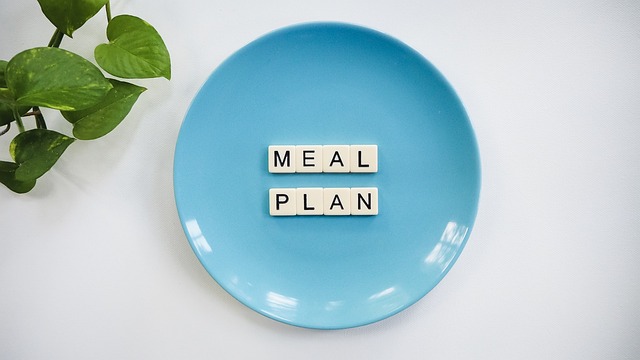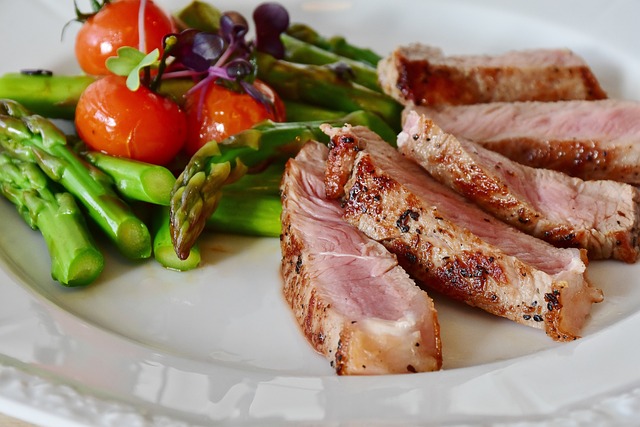
A soft food diet is a temporary or permanent dietary modification that is recommended for people who have difficulty chewing or swallowing. This type of diet includes foods that are easy to chew, swallow, and digest. The reasons for following a soft food diet can be varied, ranging from dental problems to surgery to cancer treatment.
The main goal of a soft food diet is to provide adequate nutrition while minimizing the risk of choking, aspiration, or other complications. The foods that are allowed on a soft food diet can vary depending on the individual’s specific needs and preferences. Some people may be able to tolerate slightly harder or more textured foods, while others may need to stick to pureed or mashed foods.
In this article, we will explore the basics of a soft food diet, including what foods are allowed and what foods should be avoided. We will also provide some tips and recipes for making tasty and nutritious soft food meals. Whether you are recovering from a dental procedure, dealing with a chronic condition, or simply looking for some new meal ideas, this article will help you navigate the world of soft food diets.
Table of Contents
Understanding Soft Food Diets
Definition and Purpose
A soft food diet is a type of diet that consists of foods that are easy to chew and swallow. This type of diet is often recommended for individuals who have difficulty chewing or swallowing due to dental problems, surgery, or other medical conditions. The purpose of a soft food diet is to provide adequate nutrition while reducing the risk of choking or other complications.
Soft foods are typically low in fiber and require minimal chewing. Examples of soft foods include mashed potatoes, scrambled eggs, cooked vegetables, and soft fruits. Foods that are difficult to chew, such as tough meats, raw vegetables, and hard fruits, should be avoided.
Benefits and Considerations
There are several benefits to following a soft food diet. For individuals with dental problems or who have had dental surgery, a soft food diet can help reduce pain and discomfort while allowing the mouth to heal. For individuals with swallowing difficulties, a soft food diet can help reduce the risk of choking and aspiration.
However, it is important to note that a soft food diet may not provide all of the necessary nutrients for optimal health. Soft foods are often low in fiber and may be lacking in certain vitamins and minerals. It is important to work with a healthcare professional to ensure that the diet is nutritionally balanced and meets individual needs.
In addition, it is important to avoid foods that are high in sugar and fat, as these can contribute to weight gain and other health problems. Soft foods should be prepared in a healthy manner, such as baking or steaming, rather than frying or sautéing.
Overall, a soft food diet can be a helpful tool for individuals with certain medical conditions or dental problems. However, it is important to work with a healthcare professional to ensure that the diet is nutritionally balanced and meets individual needs.
Key Components of a Soft Food Diet
A soft food diet is typically recommended for individuals who have difficulty chewing or swallowing due to dental problems, surgery, or other medical conditions. The key components of a soft food diet include the following:
Nutritional Balance
It is important to maintain a balanced diet while on a soft food diet. This can be achieved by incorporating a variety of soft foods from different food groups. Some examples of soft foods that are rich in nutrients include:
- Cooked vegetables (such as carrots, sweet potatoes, and green beans)
- Soft fruits (such as bananas, peaches, and avocados)
- Cooked grains (such as rice, quinoa, and oatmeal)
- Soft proteins (such as eggs, tofu, and fish)
To ensure adequate nutrient intake, it is recommended to consult with a healthcare professional or registered dietitian to develop a personalized soft food meal plan.
Hydration
Staying hydrated is important for overall health and well-being, especially while on a soft food diet. Soft foods can often be low in water content, so it is important to incorporate hydrating fluids such as water, tea, broth, and fruit juice into the diet. It is recommended to aim for at least 8 cups of fluid per day, unless otherwise advised by a healthcare professional.
In summary, a soft food diet should include a variety of soft foods from different food groups to maintain nutritional balance, and adequate hydration should be maintained through the incorporation of hydrating fluids.
Recommended Foods
Fruits and Vegetables
Soft fruits and cooked vegetables are great options for a soft food diet. Some recommended fruits include bananas, ripe peaches, and canned fruits without seeds. Cooked vegetables such as carrots, squash, and green beans are also good choices. Avoid raw or crunchy fruits and vegetables.
Proteins
Soft proteins are important for maintaining a balanced diet while on a soft food diet. Some recommended options include soft-cooked eggs, tofu, well-cooked fish, and ground or finely chopped meats. Avoid tough or chewy meats.
Dairy Products
Dairy products can provide important nutrients for a soft food diet. Some recommended options include yogurt, cottage cheese, and soft cheeses such as brie or cream cheese. Avoid hard or aged cheeses.
Grains and Cereals
Soft grains and cereals can provide energy and fiber for a soft food diet. Some recommended options include oatmeal, cream of wheat, and well-cooked pasta. Avoid hard or crunchy cereals and breads.
Desserts and Snacks
Soft desserts and snacks can be enjoyed in moderation on a soft food diet. Some recommended options include pudding, ice cream, and smoothies. Avoid hard candies and snacks that require a lot of chewing.
Remember to always consult with a healthcare professional before starting a new diet or making significant changes to your current diet.
Foods to Avoid
Hard Foods
When on a soft food diet, it is important to avoid hard foods that require a lot of chewing. These foods can be difficult to eat and may cause pain or discomfort. Examples of hard foods to avoid include nuts, seeds, popcorn, raw vegetables, and hard fruits such as apples.
Spicy and Acidic Foods
Spicy and acidic foods can be irritating to the mouth and throat, especially if they are already sore or tender. It is best to avoid these types of foods when on a soft food diet. Examples of spicy and acidic foods to avoid include hot sauce, citrus fruits, tomatoes, and vinegar.
Sticky or Chewy Foods
Sticky or chewy foods can be difficult to swallow and may get stuck in the throat, causing discomfort or choking. It is important to avoid these types of foods when on a soft food diet. Examples of sticky or chewy foods to avoid include caramel, taffy, gum, and dried fruit.
Overall, it is important to avoid any foods that are difficult to chew, swallow, or digest when on a soft food diet. By following these guidelines, individuals can ensure that their soft food diet is both safe and effective.
Meal Planning and Preparation
Recipes and Ideas
When planning meals for a soft food diet, it is important to consider foods that are easy to chew and swallow. Some ideas for soft food meals include scrambled eggs, mashed potatoes, cooked vegetables, soups, and smoothies. Soft fruits such as bananas and avocados can also be incorporated into meals.
Here are some recipe ideas for soft food meals:
- Creamy Carrot Soup: Cook chopped carrots in a pot with vegetable broth until soft. Blend the mixture until smooth and add cream or milk to create a creamy texture.
- Mashed Cauliflower: Steam cauliflower until soft and mash with butter, milk, and salt to taste.
- Soft Scrambled Eggs: Cook eggs in a non-stick pan with butter or oil over low heat until they are soft and creamy.
Cooking Techniques
When preparing meals for a soft food diet, it is important to use cooking techniques that make the food easy to chew and swallow. Here are some techniques to consider:
- Boiling: Boiling vegetables and pasta until they are soft can make them easier to eat.
- Steaming: Steaming vegetables can also make them soft and easy to chew.
- Blending: Blending soups and smoothies can create a smooth texture that is easy to swallow.
- Mashing: Mashing foods such as potatoes and avocados can make them easier to eat.
By using these cooking techniques and recipe ideas, meal planning for a soft food diet can be simple and delicious.
Adapting to a Soft Food Diet
Eating Out
When eating out, it can be challenging to find soft food options on the menu. However, many restaurants are willing to accommodate dietary restrictions. It is recommended to call ahead and speak with the restaurant manager or chef to discuss your needs.
Some soft food options that are commonly available at restaurants include mashed potatoes, soups, and well-cooked vegetables. It is important to avoid foods that are tough or chewy, such as steak or bread.
Social Events and Gatherings
Attending social events and gatherings can also be difficult when on a soft food diet. It is recommended to bring your own soft food options or speak with the host beforehand to discuss your dietary needs.
Soft food options that are easy to bring to social events include mashed sweet potatoes, smoothies, and soft fruits such as bananas or avocados. It is important to avoid crunchy or hard foods such as chips or nuts.
Overall, adapting to a soft food diet may require some adjustments and planning, but there are plenty of options available. By being proactive and communicating your needs, it is possible to maintain a healthy and enjoyable diet.
Monitoring Health and Progress
When following a soft food diet, it is important to monitor your health and progress to ensure that you are receiving adequate nutrition and healing properly. Here are some tips to help you monitor your health and progress:
1. Keep track of your food intake
Keeping a food diary can help you ensure that you are consuming enough nutrients and calories on a soft food diet. You can use an app or a notebook to record what you eat and drink throughout the day. This can help you identify any nutrient deficiencies or areas where you need to make adjustments.
2. Check your weight regularly
Weighing yourself regularly can help you monitor your progress and ensure that you are not losing too much weight too quickly. If you are losing weight rapidly, it may be a sign that you are not consuming enough calories or nutrients.
3. Listen to your body
Pay attention to how you feel throughout the day. If you feel weak, tired, or lightheaded, it may be a sign that you need to consume more calories or nutrients. If you experience any unusual symptoms or side effects, be sure to talk to your doctor.
4. Follow up with your healthcare provider
If you are following a soft food diet as part of a treatment plan, be sure to follow up with your healthcare provider regularly. They can monitor your progress and make any necessary adjustments to your diet or treatment plan.
By monitoring your health and progress, you can ensure that you are receiving adequate nutrition and healing properly while following a soft food diet.
Frequently Asked Questions
What are suitable soft foods to consume after dental surgery?
After dental surgery, it is recommended to consume soft foods that are easy to chew and swallow. Some suitable options include mashed potatoes, scrambled eggs, yogurt, smoothies, and soups. It is important to avoid hard, crunchy, or sticky foods that can damage the surgical site or cause discomfort.
Which meats are considered appropriate for a soft food diet?
Meats that are tender and easy to chew are suitable for a soft food diet. Some options include ground beef, chicken, turkey, fish, and tofu. It is recommended to avoid tough cuts of meat or meats with bones, as they can be difficult to chew and swallow.
What are some soft dinner options that meet dietary restrictions?
Soft dinner options that meet dietary restrictions can include baked or mashed sweet potatoes, steamed vegetables, soft-cooked grains like quinoa or rice, and soft-cooked lentils or beans. It is important to consider any dietary restrictions or allergies when selecting soft food options.
Can pasta dishes like spaghetti be included in a soft diet?
Pasta dishes like spaghetti can be included in a soft diet if the pasta is cooked until it is soft and easy to chew. It is recommended to avoid sauces with large chunks of vegetables or meats, and to opt for softer sauces like tomato or cream-based sauces.
Are there any cheese-based meals permissible on a soft food diet?
Cheese-based meals can be permissible on a soft food diet if the cheese is melted and soft. Some options include macaroni and cheese, cheese quesadillas, or cheese-topped casseroles. It is important to consider any dietary restrictions or allergies when selecting cheese-based meals.
What meal plans are recommended for someone following a soft diet regimen?
A soft diet regimen should include a variety of soft, easy-to-chew foods that meet nutritional needs. Some meal plan options include scrambled eggs with soft-cooked vegetables for breakfast, a turkey and cheese wrap for lunch, and a baked sweet potato with soft-cooked beans for dinner. It is important to consult with a healthcare professional or registered dietitian to ensure that nutritional needs are being met.

